There are resorts that might be described as “Away from it all” when, truth be told, they’re little more than just around a corner from the nearest highway or airport. Yet the Oanain Munina really is in the back of beyond. “No place like home” it says on the card, and this is like no place I’ve ever been before. Wooden buildings perch on stilts above shallow waters abounding with colourful fish. The manager is rarely to be seen, and the only other staff we notice are a couple of ladies who bring out meals, then disappear again.
To one side is a small village. But otherwise, this part of the world looks deserted. The sea bounds the horizon in front. Behind rise steep hillsides, clothed in dense rainforest.
We’re on the north coast of Seram, which at 340 kilometres long may be one of the largest islands you’ve never heard of. Set on its own tectonic microplate in the southern Maluku Islands, east Indonesia, it has an area 15 times greater than all Hong Kong’s land, yet only around 170,000 residents. Much of the interior is unexplored by outsiders. I’ve read two accounts of tough climbs to the 3027-metre highest point; the author of one finished with feet so sore and swollen he spent six days in hospital.
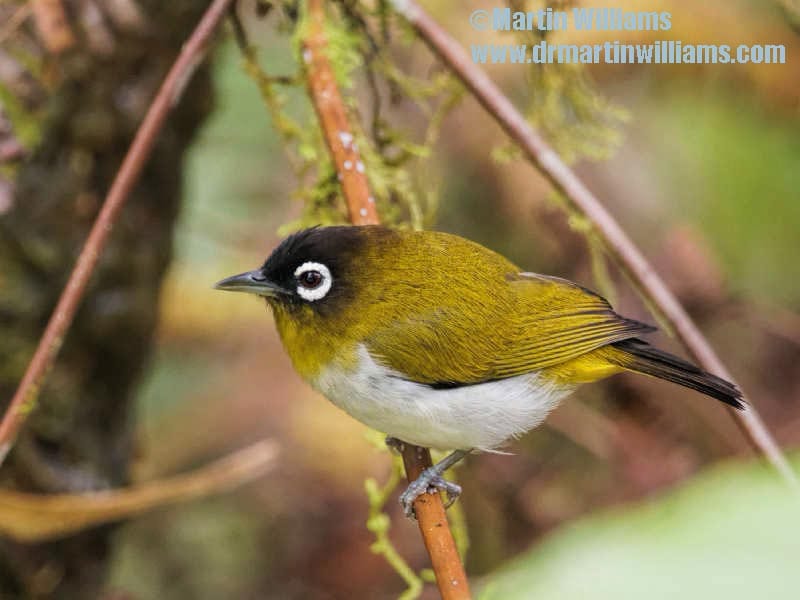
So although jungle-clad hillsides appeal to my wife, son and me, we’re content to experience them along the road we travelled from a port on south Seram, stopping at times as our guide, Vinno Soewarian, helps find birds including parrots like the aptly named Rainbow Lorikeet, and Salmon-crested Cockatoos that are close relatives of the cockatoos common in Australia and as cagebirds around the world.
There are more birds in view as we ride a boat like an outsize, motor powered canoe into the mouth of a river, and up past rows of nipa palms that are adapted to life in the tidal zone. But birds aren’t our main quarry. We arrive at a river bend where there’s a grassy bank, and Soewarian says, “There are often crocodiles here, but it’s not sunny today.” Probably, though, several saltwater crocodiles – billed online as “the animal most likely to eat a human” – are lurking close by, and I keep my hands clear of the murky water.
After cruising back down the river, we head offshore, and stop at a fine sand beach on a tiny islet. There’s a scrawny wood, with five olive honeyeaters high in the trees. Though rather drab little birds, these are intriguing as they may abound here during September, but are yet to be found on Seram or other islets close by.
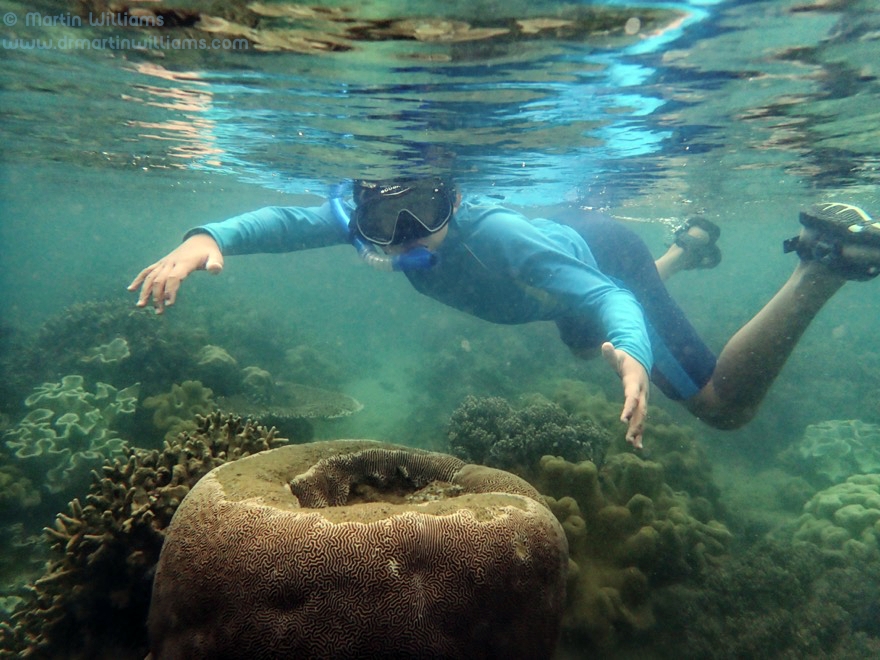
The Maluku Islands are in the Coral Triangle, the global centre of marine biodiversity, and Soewarian advises this islet is good for swimming. Even as I wade into the shallow waters, there are corals and electric blue fish around. I snorkel over a scintillating underwater landscape of green and brick red branching corals, reddish brain corals, waving fronds of algae. Everywhere there are fish. Most avoid me, darting into gaps below and between corals. But two clown fish rocket out of an anemone and swim right up close, reminding me of Nemo’s dad, seemingly spoiling for a fight and declaring, “This is our anemone. Go away!”
With business slow on a weekday, the resort manager takes us on a stroll through the village. Some of the single storey houses are built on solid ground, others are on stilts above the sea. School’s out for the day, and young children abound, a group of them busy sorting freshly harvested cloves, while young boys swim in a spring-fed pool.
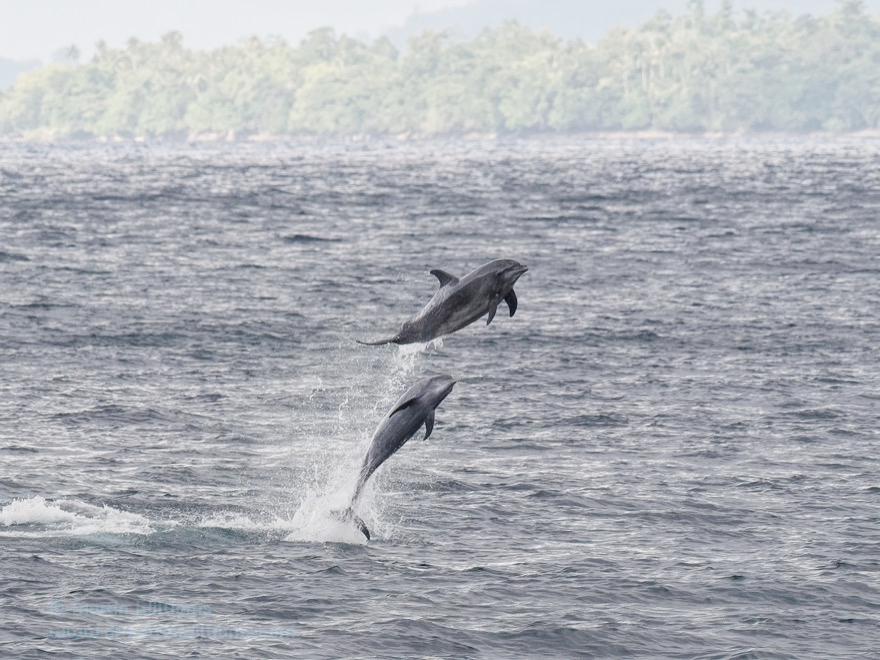
We leave Seram by a large, fast ferry, and as we near Ambon Island, eight or more striped dolphins swim across the wake and start jumping and leaping into the air. Two shoot vertically upwards till they’re a couple of body lengths – around four metres – clear of the water, before splashing back down. It’s exhilarating to watch their exuberant display.
Though a twentieth the size of Seram, Ambon has almost twice the population, and hosts one of the main cities in eastern Indonesia. It was one of the main Spice Islands, and particularly important for cloves. While “Spice Islands” may conjure images of an exotic tropical paradise, this region has known bloody and brutal periods.
Haruku Village – and guardian of nature Eliza Kissya
We find remnants of these a short boat ride away, in Haruku village on Haruku Island. A thick stone wall and archway are the main remains of a 17th century fort, built by the Dutch to help the East India Company maintain control of the spice trade. Nearby, an almost finished, brand new church rises from the platform of the former church that was destroyed around the turn of this century – when the village was attacked by people from Ambon, during internecine warfare that shook the Maluku Islands.
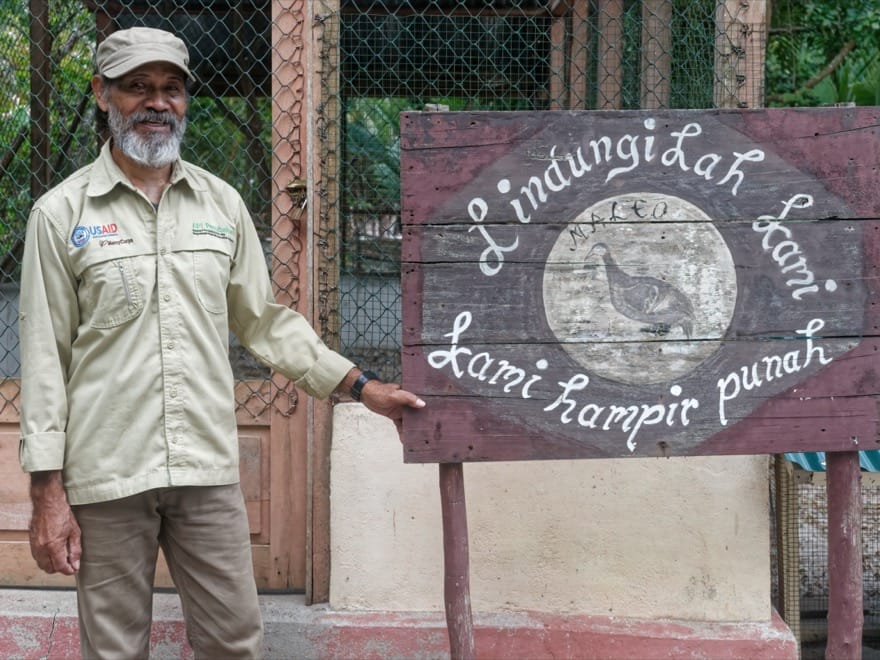
Today, the village is peaceful, and we’re shown around by Eliza Kissya, a soft spoken man with a bushy grey beard. He’s the village kewang – filling a traditional role that’s evidently centred on trying to ensure man and nature live in harmony.
Kissya has won several environmental awards. His projects include an attempt to help conserve the Moluccan Megapode, a bird like a pigeon crossed with a chicken that’s unique to the Moluku Islands, and nests in a handful of locations, all in coastal sandy areas. The females arrive under cover of darkness, and it’s close to midnight when we watch one by torchlight, using its big feet – the “mega poda” – to excavate a hole in a sandy bank.
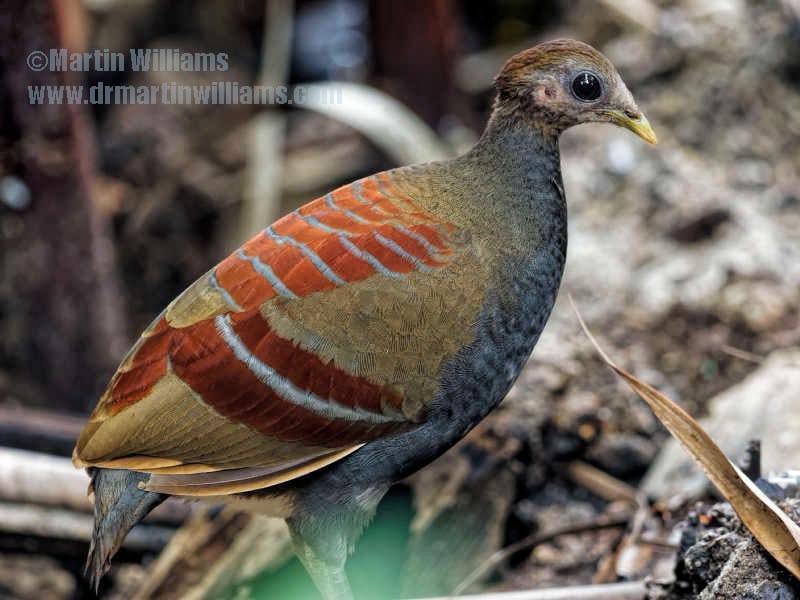
It’s distant, so I’m delighted the next morning to find a megapode that allows me to slowly approach till I can readily admire its olive plumage with intricate brown bands. Perhaps it lingers as Kissya has three birds in simple cages. Two are youngsters that hatched from eggs he buried, and will soon release. He buys eggs that fellow villagers collects, and rears the hatchlings till they are over three months old, and able to better evade predators. Then, it’s time to set them free. “My dream can come true,” he says. “The birds can colour the world again.”
[Written for the South China Morning Post]
See also my Photos of Seram and Photos of Haruku.
Indonesia travel articles
Spectacular southern Java including Geopark
Mention to a Hongkonger that you’re going on holiday to Indonesia and they may ask, “Bali?” Yet there is far more…
To the Spice Islands of Wallacea, eastern Indonesia
Approaching Ternate from the air, I see a volcano rising from tropical blue sea, with green slopes, clusters of small houses…
Kawah Ijen sulphur mine on Java in Indonesia
It’s a little after 1.30am. Time for the earliest breakfast of my life: noodles and coffee, at a shanty style café…
Javan Jungles inc Gunung Halimun and Ujung Kulon Indonesia
Though Java is the world’s most populous island, there are remote forest areas with wildlife including rare species like gibbons and…
Forest Conservation in Kalimantan, Indonesian Borneo
I’m travelling to meet people working to save the remaining forests of Borneo, which was described Charles Darwin as, “One great…

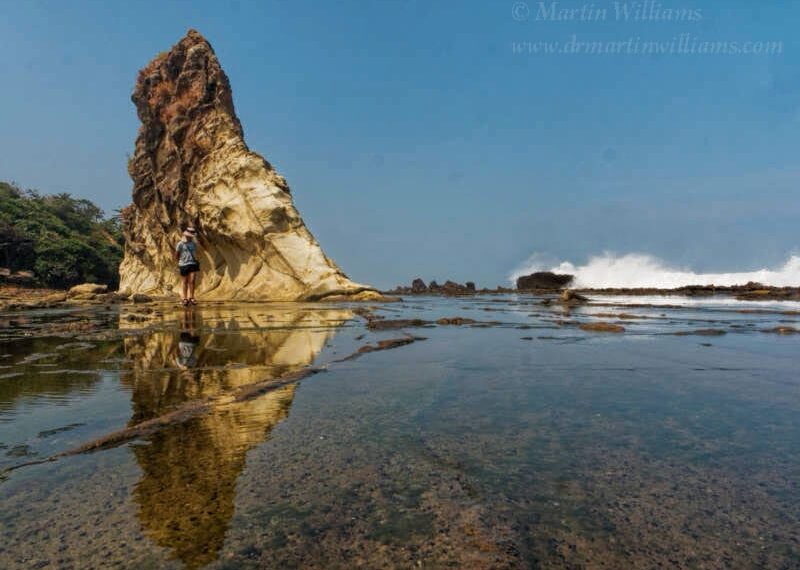
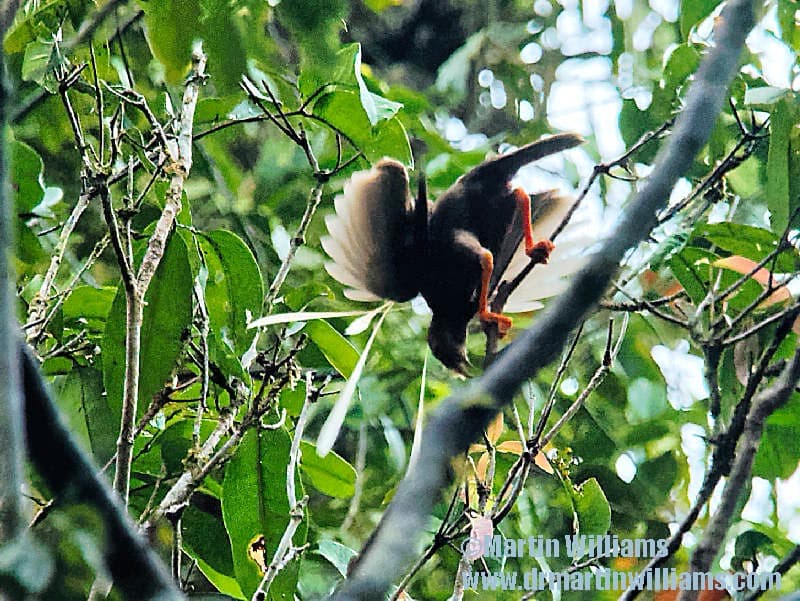
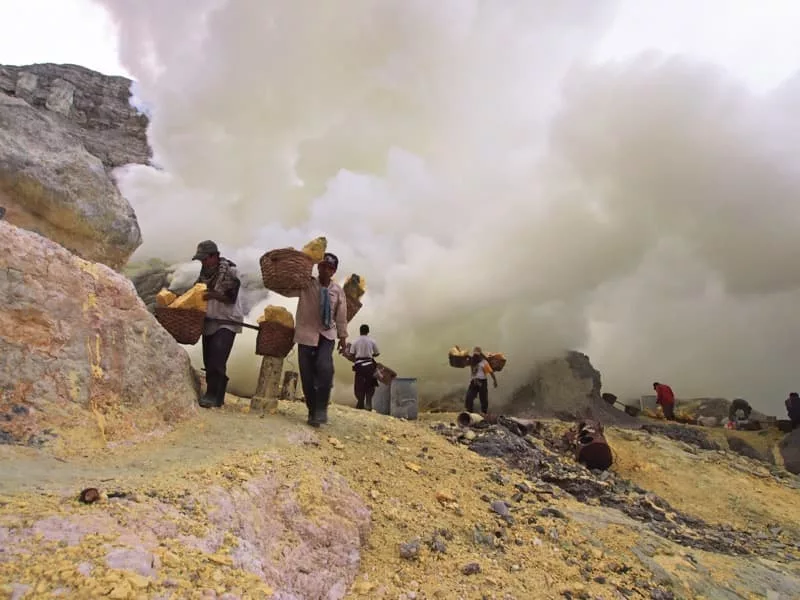
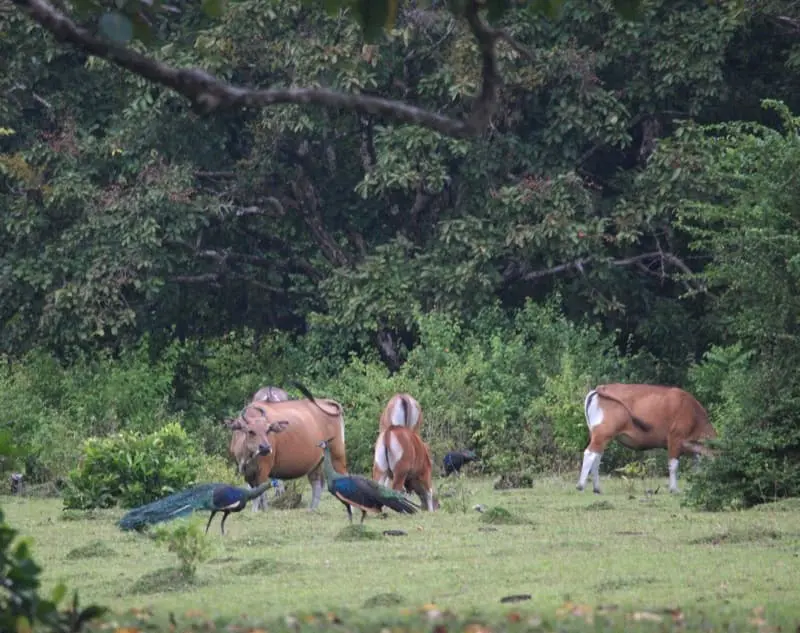
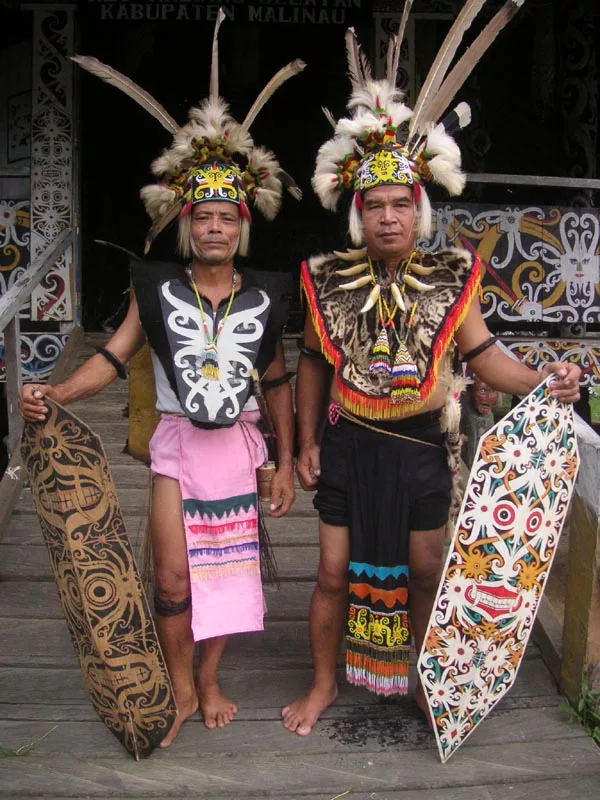
I was wondering how much the lodging was there in the islands I am very intrigued my wife and I are both retired living on Social Security of all things so we are just curious thank you for your time
Hi Arthur:
Thanks for the comment.
I’ve just done quick search, found this place looking similar to the one we stayed in [not sure if the same]; around US$40 per night:
https://www.airbnb.com/rooms/23037116?source_impression_id=p3_1682993541_oLo2fl%2FxDsV43t7w
BUT for Seram, there are other costs, which add up.
It’s remote, as I hope you realise from article; even getting there costs – reach Jakarta, then fly to Ambon, then a ferry.
About zero English spoken; so may well need a guide [we went with a guy living on Ambon, who knows Seram well; I can pass contact if you remain interested]
Then, vehicle hire on Seram; cheap compared to much of the world, but again it adds up. Didn’t notice any public transport there.
If you do make it, well it’s an adventure – not Bali by a long shot!
You might also see articles on some other places in Maluku; I’ve covered Ternate on this site, and some nearby parts. Also Spice Islands, a bit more accessible.
Sulawesi worth a look too; also off beaten track, but easier and with more facilities etc than Ambon. Again know a good guide.
Hope this is of some interest!